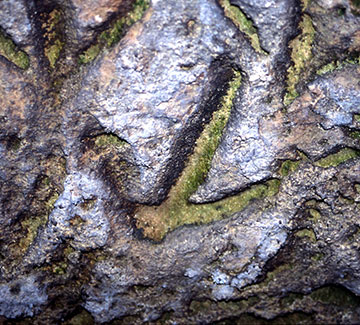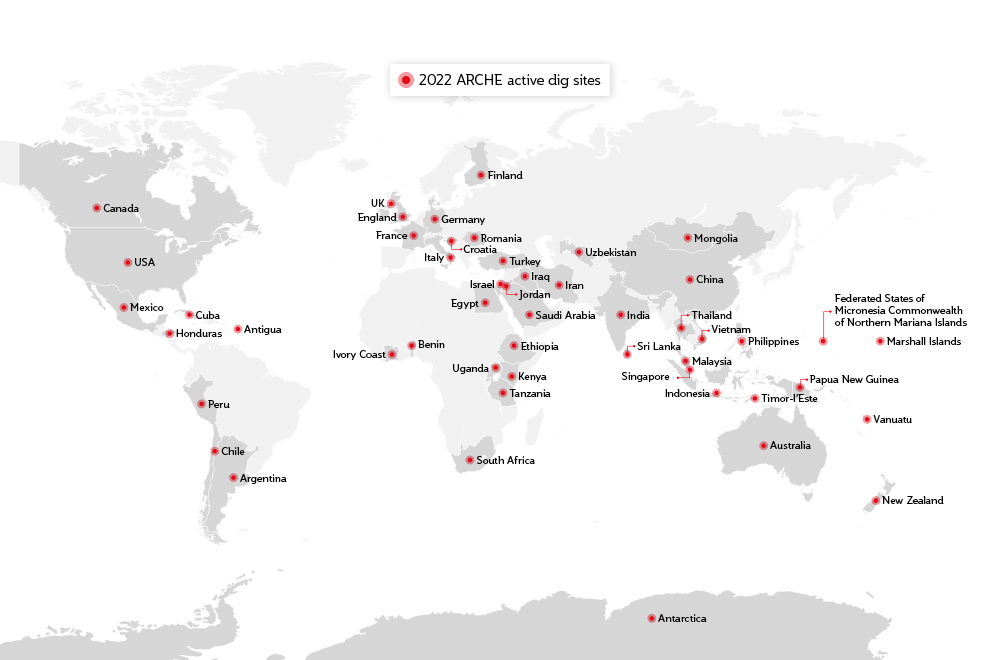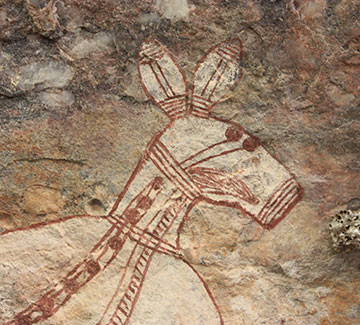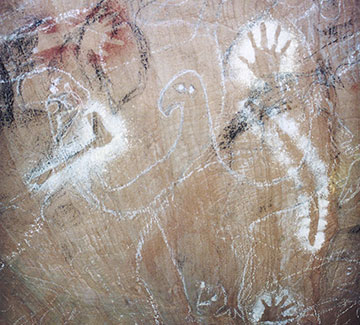Gaining a deeper understanding of human evolution
ARCHE is at the forefront of the study of human evolution. As a global leader in research and education, we bring together internationally recognised scholars and institutions to plot our species’ evolution and expand our understanding of humanity’s place in the natural world.
We provide a dynamic, cooperative environment for students and researchers that crosses disciplinary boundaries and international borders. Based in Brisbane, we are deeply engaged with our land’s First Peoples and have a particularly strong focus on Australia, the Pacific and Asia.
A message from the director
‘Who are we? Where did we come from? How have we shaped life on earth? How has it shaped us? These are just some of the questions that members of ARCHE are working to answer.
Our Centre undertakes active fieldwork and collaborative research projects in Australia and internationally, applying state-of-the-art scientific approaches to deepen our knowledge of human history and evolution.
As we investigate past human lifestyles and their effects on biodiversity and the environment, we glean critical insights that enhance our understanding of our place in the modern world and its variable ecosystems.
We provide an inclusive, creative and inspiring environment for both staff and students, and we encourage anyone who would like to join our Centre to get in touch.’
Professor Michael Petraglia
Director of the Australian Research Centre for Human Evolution at Griffith University
Our research themes
Our research offers a window into the past, allowing us to glimpse the biological and cultural development of humans across the globe.
International Initiative for Transforming Human Origins Research
Find out about the 'International Initiative for Transforming Human Origins Research' and our aim to address the human story in an entirely new and different way.
ARCHE operates across every continent on earth
From Asia to Antarctica with active archaeological sites in more than 45 countries. This international approach provides us with an expansive yet nuanced perspective on the story of human evolution, allowing us to capture both its broad strokes and watershed moments.
It also offers us the opportunity to compare and contrast how drastically different communities of humans have converged and deviated over time, deepening our understanding of human evolution on a local and global stage.
Raymond Dart Lecture Series
This annual event pays homage to one of Australia’s most celebrated palaeoanthropologists by presenting some of the brightest minds and newest research in the field.
Our banner
The ivory female figurine of Hohle Fels depicted in our banner is the oldest image of a human being. It was unearthed in a cave in Germany in 2008 and is housed in the Prehistoric Museum of Blaubeuren (Urgeschichtliches Museum Blaubeuren). Sculpted from the tusk of a woolly mammoth, it was found in six fragments, with several pieces still missing. Its discovery pushed back the date of the oldest known human figurative art by several millennia, though interpretations of its meaning and symbolism are mixed.
With a loop in place of a head, this artefact may have been designed—or repaired—as a two-part piece, with the head being constructed from something organic. The loop indicates it could also have been worn as an amulet. Yuwaalaraay, Kamilaroi, Ngemba, and Wailwan artist Melissa Stannard explored this possibility, using traditional First Peoples weaving and ornamentation techniques. Stannard, Melissa K., and Michelle C. Langley. "The 40,000-Year-Old Female Figurine of Hohle Fels: Previous Assumptions and New Perspectives." Cambridge Archaeological Journal 31.1 (2021): 21-33.
Griffith secures $85m to transform global understanding of human origins
09 Dec 2025
Transforming Human Origins Research Centre of Excellence to reframe the study of our species...
12,000-year-old monumental camel rock art acted as ancient ‘road...
01 Oct 2025
On towering rock panels, artists inscribed artworks of camels, ibex, gazelles and more, risking...
Oldest evidence of humans on ‘Hobbit’s’ island neighbour discovered – who they...
07 Aug 2025
Early hominins made a major deep-sea crossing to reach the Indonesian island of Sulawesi much...
Longest known seafaring venture 8,500 years ago brings hunter-gatherers to...
14 Apr 2025
Oldest long-distance seafaring expedition took place before the invention of boats with sails,...
Australia’s First Peoples’ history
ARCHE's members are actively involved in research of Australia’s First Peoples’ history working in close partnership with Indigenous communities. Members take a broad approach to the study of First Peoples’ outstanding and diverse history with projects across Australia, focused on archaeology, rock art and genetics. ARCHE's scientific research aims to provide an appreciation of Australia's Indigenous past and to promote this for the benefit of the general public.

Emu track engraving from the Emu Cave site, Blue Mountains, NSW, that dates back at least 2,000 years. Courtesy of the Blue Mountains Aboriginal community. Photograph by Distinguished Professor Paul S.C. Taçon.
Acknowledgement of Country
Griffith University acknowledges the people who are the traditional custodians of the land and pays respect to the Elders, past and present, and extends that respect to other Aboriginal and Torres Strait Islander peoples.
Family groups
Our Brisbane campuses are situated on the land of the Yugarabul, Yuggera, Jagera and Turrbal peoples. Logan is situated on the land of the Yuggera, Turrbal, Yugarabul, Jagera and Yugambeh peoples. The Gold Coast is situated on the land of the Kombumerri peoples, part of the Yugambeh language region.


